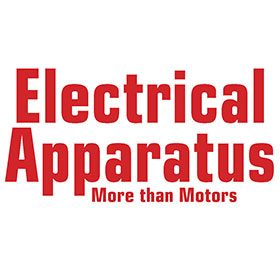Technical Discussion: How To Close the Circular Economy Loop for Motors and Transformers at their End-of-life: Circular Economy Approach
Several hundred thousand of medium power transformers and millions of motors reach their end-of-life annually in Europe. A proper recovery and recycling of their raw materials is key to implement a truly circular economy.
On this session we will be covering the following:
- Liquid-filled medium-power transformers have a high degree of circularity at end-of-life, with about three quarters of the material compatible with an entirely circular process. This potential is fully exploited thanks to the fact that only certified companies are allowed to handle liquid-filled transformer recycling, which is a positive legacy of the PCB crisis.
- Dry type transformers follow a totally different recycling route and demonstrate how a lack of separability in the conception of a device can lead to a problematic end-of-life process. Their coils are overmoulded with an epoxy or quartz resin that is hard to separate from the metal conductors. That said, new technology developments open promising routes to improve the circularity of dry transformers.
- All metals from motors can be recovered almost 100%, with some impurities. Smaller motors <150kg are usually not further dismantled. They go directly as entire unit as “electrical scrap” outside of the EU. For larger motors at least housing is cracked and stator vs rotor separated. Copper in the rotor is usually always taken out and sold separately to metal brokers or to recyclers.
Wednesday 04 June 13:15 - 13:55 Central Stage
Manufacturing Technologies and Innovations
Several hundred thousand of medium power transformers and millions of motors reach their end-of-life annually in Europe. A proper recovery and recycling of their raw materials is key to implement a truly circular economy.
On this session we will be covering the following:
- Liquid-filled medium-power transformers have a high degree of circularity at end-of-life, with about three quarters of the material compatible with an entirely circular process. This potential is fully exploited thanks to the fact that only certified companies are allowed to handle liquid-filled transformer recycling, which is a positive legacy of the PCB crisis.
- Dry type transformers follow a totally different recycling route and demonstrate how a lack of separability in the conception of a device can lead to a problematic end-of-life process. Their coils are overmoulded with an epoxy or quartz resin that is hard to separate from the metal conductors. That said, new technology developments open promising routes to improve the circularity of dry transformers.
- All metals from motors can be recovered almost 100%, with some impurities. Smaller motors <150kg are usually not further dismantled. They go directly as entire unit as “electrical scrap” outside of the EU. For larger motors at least housing is cracked and stator vs rotor separated. Copper in the rotor is usually always taken out and sold separately to metal brokers or to recyclers.
Speakers
General Manager, Menzel Elektromotoren GmbH
Market Research Consultant, International Copper Association Europe


























